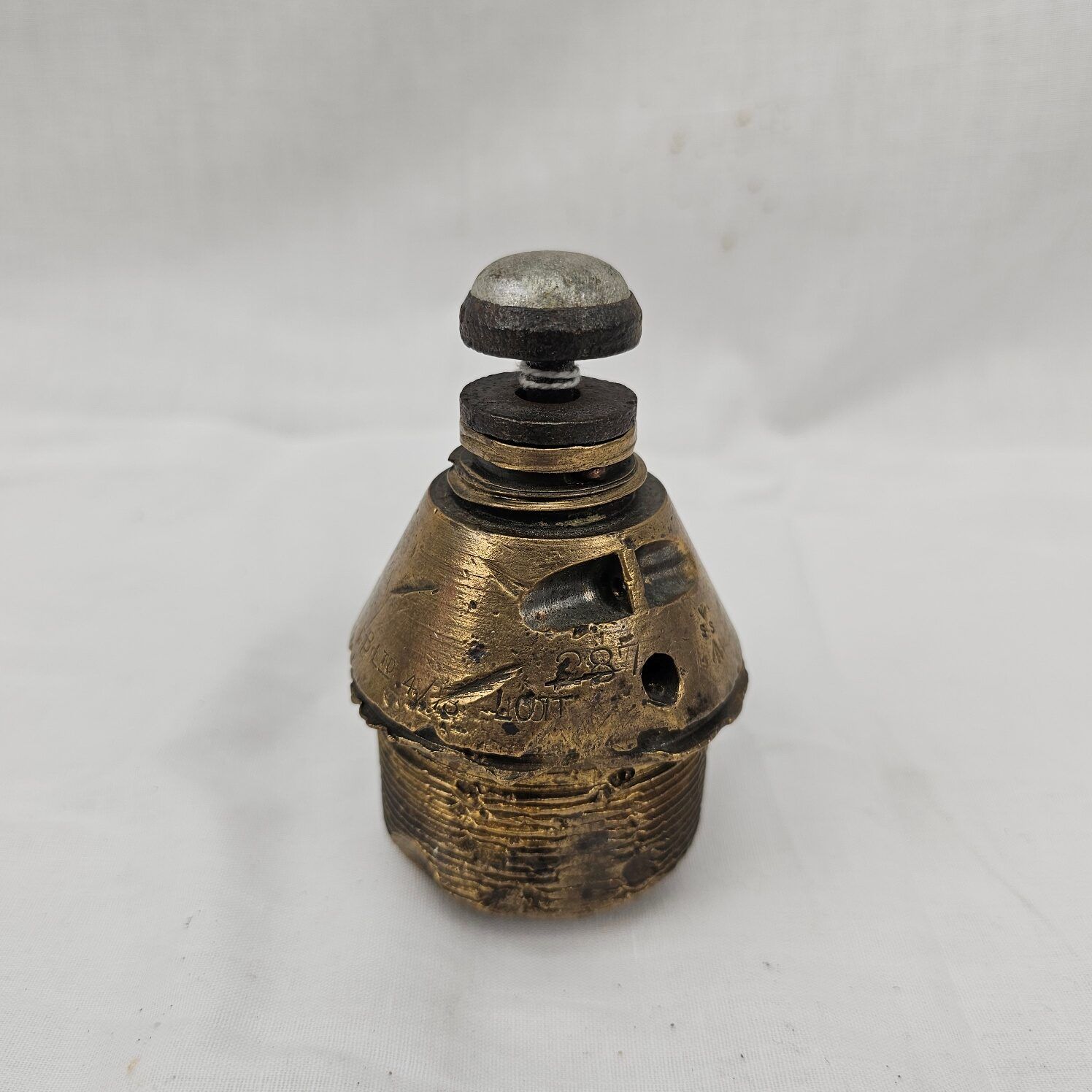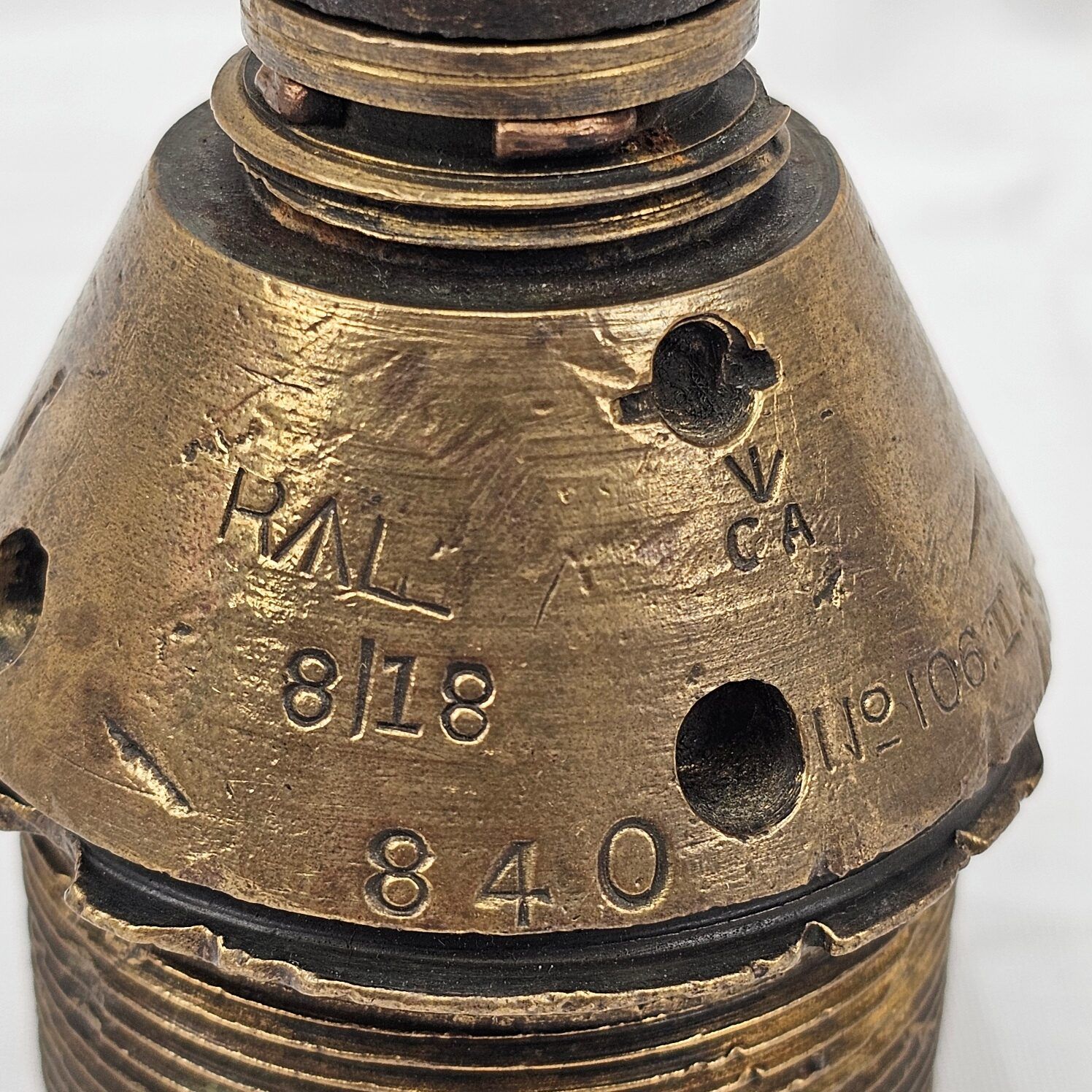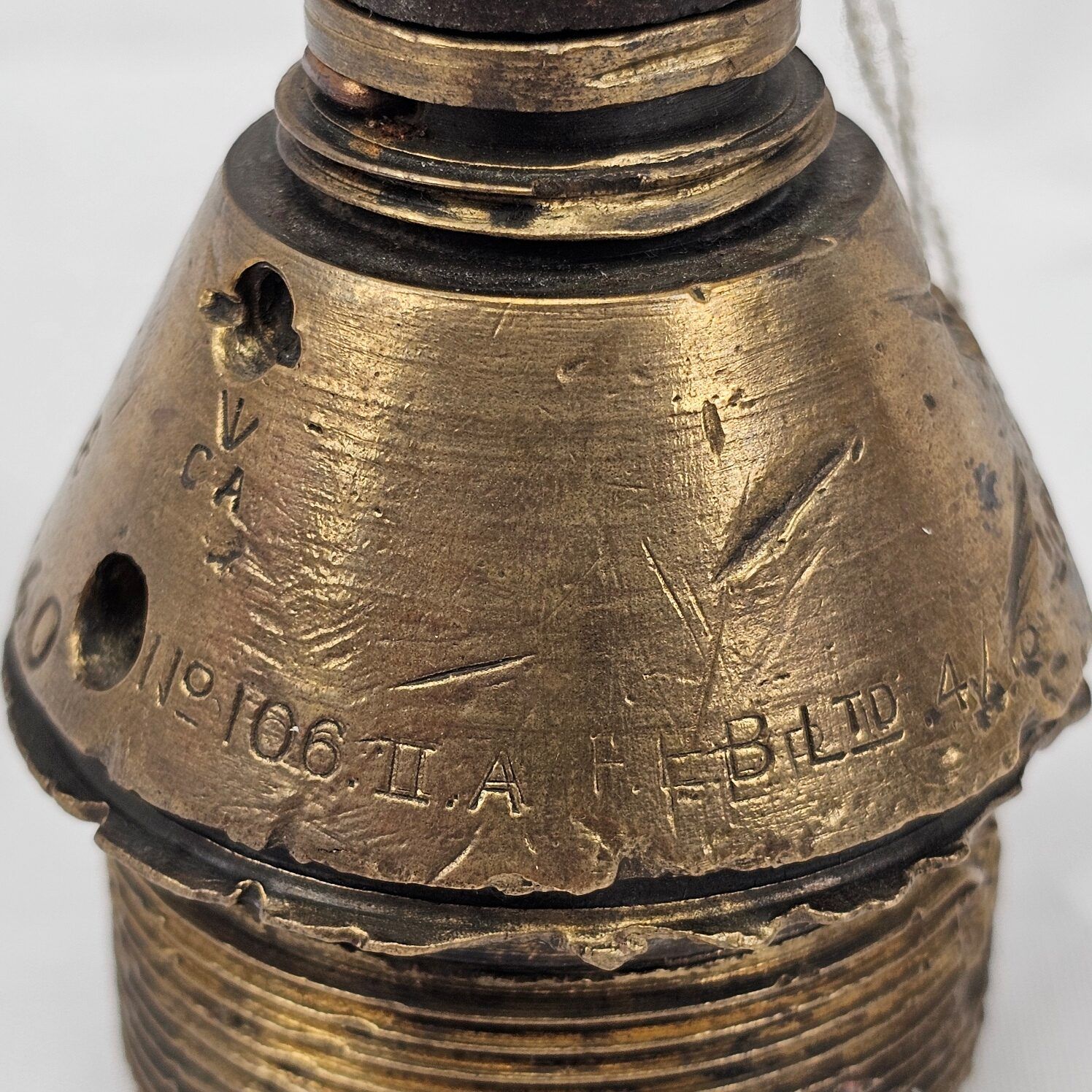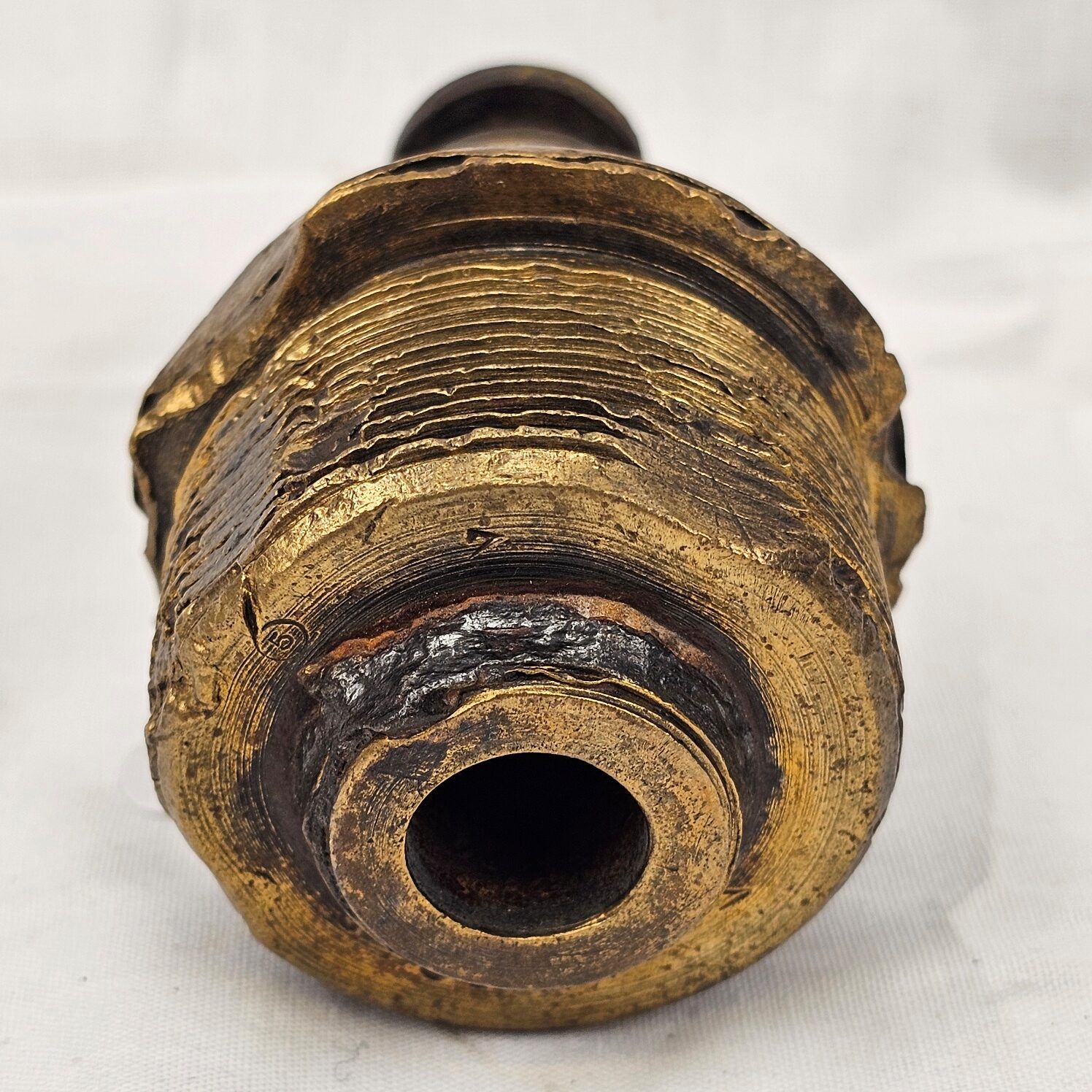~ WW1 British No. 106 Artillery Fuse ~
The British No. 106 Fuse, utilized during World War I, represents a significant advancement in the field of artillery munitions. This fuse was part of the ongoing efforts throughout the war to increase the effectiveness, reliability, and versatility of artillery, which played a crucial role on the battlefields of the Great War. The No. 106 Fuse is particularly notable for its design features and the impact it had on artillery tactics. Here’s an in-depth look at its characteristics and historical significance:
Design and Features
Type: The No. 106 Fuse was a percussion fuse, designed to detonate an artillery shell upon impact with a target. Its design aimed to ensure reliable detonation under a wide range of conditions.
Innovations: One of the key innovations of the No. 106 Fuse was its improved sensitivity and reliability over previous models. It featured a more robust mechanism that was less likely to fail upon impact, ensuring that shells would explode as intended when striking enemy positions or fortifications.
Operational Use
Effectiveness in Combat: The reliability and effectiveness of the No. 106 Fuse made it a valuable tool for British artillery units. It was particularly useful for destroying or neutralizing enemy trenches, bunkers, and other fortifications, where the precise and reliable detonation of shells was critical for achieving tactical objectives.
Versatility: While primarily designed for impact detonation, the principles and technologies developed for the No. 106 Fuse contributed to advancements in other types of fuses as well, including time and combination fuses, further enhancing the versatility of artillery munitions.
Challenges and Developments
Manufacturing and Quality Control: The production of the No. 106 Fuse, like other sophisticated munitions components of the time, required precise manufacturing and stringent quality control to ensure reliability. The challenges associated with these requirements led to innovations in manufacturing processes and quality assurance practices.
Continual Improvement: The experiences gained from the deployment of the No. 106 Fuse, along with feedback from the field, drove continuous improvements in fuse design and manufacturing throughout the war, contributing to the overall evolution of artillery technology.
Legacy
Impact on Military Technology: The No. 106 Fuse is an example of the rapid technological advancements that characterized World War I, a conflict that saw significant innovations in weapons, tactics, and munitions.
Influence on Subsequent Conflicts: The lessons learned from the design, production, and use of the No. 106 Fuse and other artillery fuses in World War I had a lasting impact on munitions technology, influencing developments in artillery fuses used in later conflicts.
The No. 106 Fuse, with its emphasis on reliability and effectiveness, exemplifies the critical role of munitions technology in shaping the course of World War I. It reflects the broader trends of innovation and adaptation that defined the war, as combatants sought technological solutions to the unprecedented challenges of modern, industrialized warfare.








